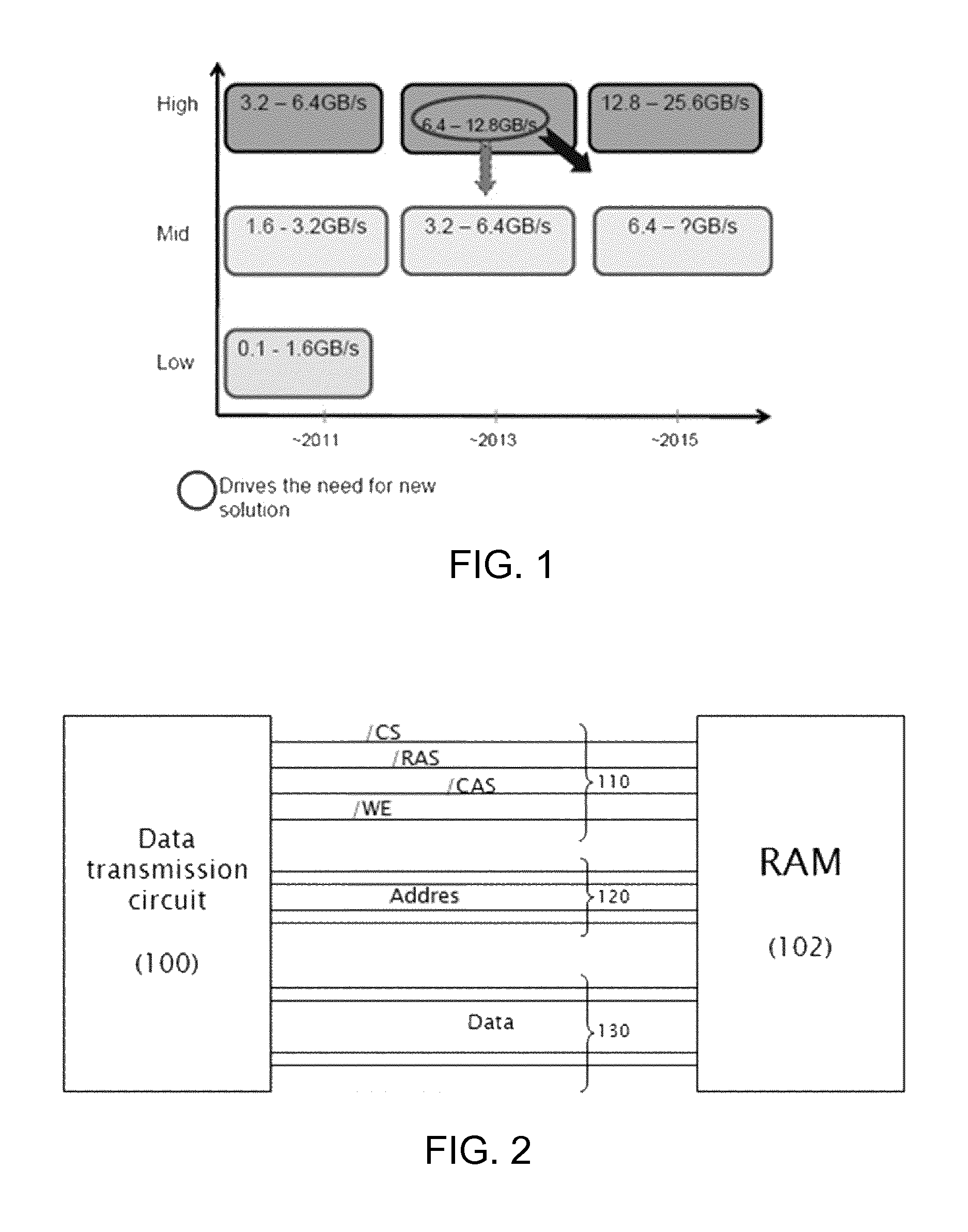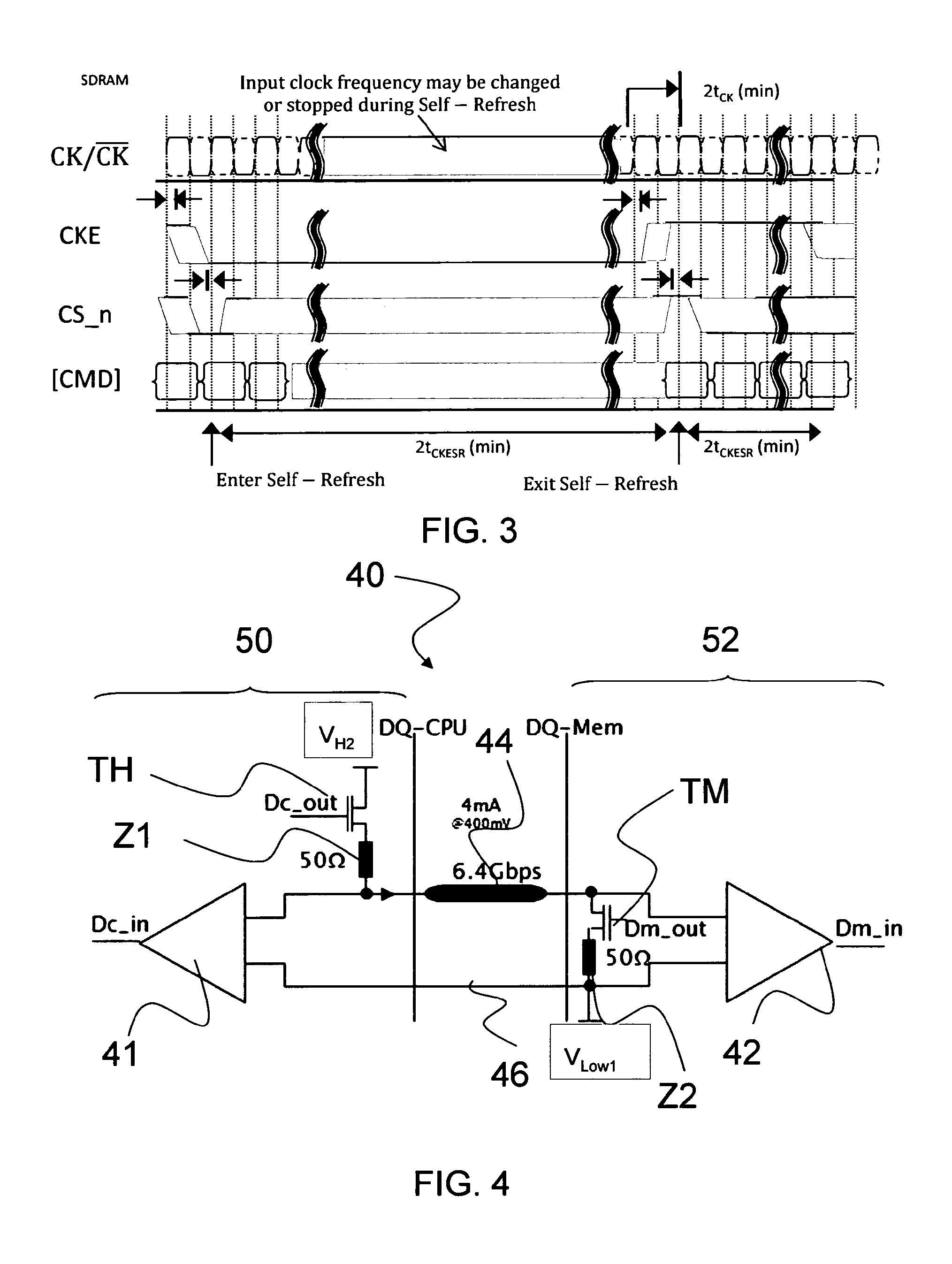DRAM memory interface
a memory interface and dram technology, applied in the field of dram (dynamic random access) memory, can solve the problems of increasing the complexity of software applications, increasing the cost of dram modules, and the difficulty of double the highest defined bandwidth today, so as to reduce the energy consumption of dram interfaces and increase the bandwidth of dram interfaces
- Summary
- Abstract
- Description
- Claims
- Application Information
AI Technical Summary
Benefits of technology
Problems solved by technology
Method used
Image
Examples
Embodiment Construction
[0056]Referring to FIG. 5, it is shown an illustration of a schematic circuit block diagram showing data transmission between a CPU / host side and a memory. Especially, FIG. 5 shows an example of a DRAM memory interface 54 for transmitting signals between a memory controller device 50 and a DRAM memory device 52. The term memory interface refers to the means for allowing interactions between components and how these interactions are performed. A DRAM memory interface is thus hardware that allows a memory controller device and a DRAM memory device to communicate; the DRAM memory interface works as an input / output system between the memory and its controller.
[0057]The CPU / host, or memory controller device, may be, but is not limited to, a piece of hardware dedicated to the management of the memory. The memory controller device may be also a CPU (Computer Processing Unit), or at least managed by the CPU. The memory controller device may also be a computer program executable by hardware ...
PUM
 Login to View More
Login to View More Abstract
Description
Claims
Application Information
 Login to View More
Login to View More - R&D
- Intellectual Property
- Life Sciences
- Materials
- Tech Scout
- Unparalleled Data Quality
- Higher Quality Content
- 60% Fewer Hallucinations
Browse by: Latest US Patents, China's latest patents, Technical Efficacy Thesaurus, Application Domain, Technology Topic, Popular Technical Reports.
© 2025 PatSnap. All rights reserved.Legal|Privacy policy|Modern Slavery Act Transparency Statement|Sitemap|About US| Contact US: help@patsnap.com



